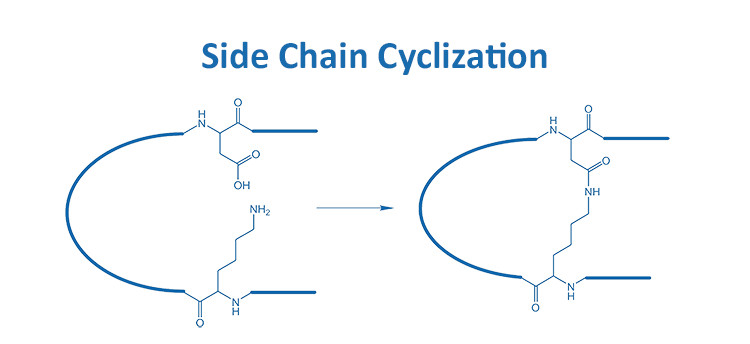In this type of cyclization a stable amide bond is formed between a side chain carboxyl group of aspartic acid or glutamic acid and an amino group of lysine. Homologues of these amino acids can be chosen as well. The minimum length of the peptide should be in this case at least 4 amino acids. Analogously to backbone cyclization, no limits are set for the maximum length. However, the cyclization gets more challenging as the number of amino acids increases. A certain folding of the peptide has a supporting effect.

